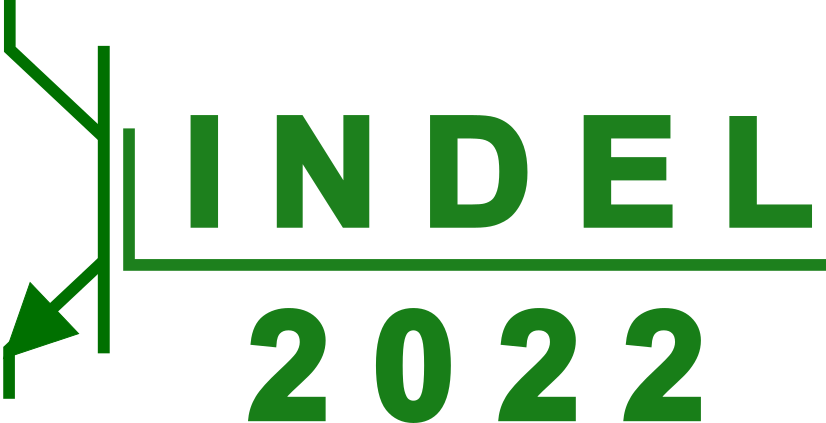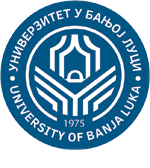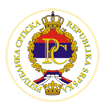XIV International Symposium on Industrial Electronics and Applications - INDEL 2022
9-11 November 2022, Banja Luka, Bosnia and Herzegovina
The Symposium is sponsored by IEEE Industry Applications Society, IEEE Power Electronics Society and IEEE Industrial Electronics Society.
Tutorials
Device characteristics, gate driving and applications of SiC power MOSFETs
Prof. Dr. Dražen Dujić and Dr. Chengmin Li
Abstract — As the next-generation power devices, SiC MOSFETs are gradually increasing their presence in a wide range of applications. Compared with the silicon counterparts, SiC MOSFET has higher voltage blocking capability, high switching frequency and potential high-temperature capability. These superior characteristics will significantly improve the performance of power conversion systems where efficiency and power density are the most critical performance parameters. However, simply replacing Si devices with SiC MOSFETs is not enough. The challenges brought by high-speed switching, reliability related issues and cost constraints require continuous work from the device level to the system level. This tutorial covers the basics of the SiC devices, gate driving principles and challenges, as well as some applications of SiC MOSFETs. This will be supported by practical examples and learnings of the authors at Power Electronics Laboratory at EPFL.
Content:
Semiconductor Devices (30 min)
- An overview
- Si devices vs Wide Band Gap devices
- Characteristics and benefits of SiC devices
Gate driving of SiC MOSFETs (45 min)
- Device switching characteristics
- Gate driver structure and principles
- Auxiliary power supply considerations
Protection of SiC devices (30 min)
- Crosstalk voltage elimination
- Short-circuit protection of SiC MOSFET
- Measurement and sensing
Coffee & Tea Break (30 min)
High power converters with SiC (30 min)
- State of the art solutions
- SiC converters: features, advantages and benefits
- SiC integration challenges
SiC MOSFETs integration challenges (45 min)
- Parallel connection of SiC MOSFETs
- Series connection of SiC MOSFETs
- Si-SiC hybrid solutions
Future Trends, Conclusions and Discussion (30 min)
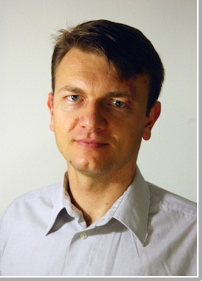
Prof. Dr. Dražen Dujić
Power Electronics Laboratory - PEL
Swiss Federal Institute of Technology – EPFL
Lausanne, Switzerland
Prof. Dr. Drazen Dujic is an Associate Professor and Head of the Power Electronics Laboratory at EPFL in Lausanne, Switzerland. His research interests include the areas of design and control of advanced high power electronic systems and high-performance drives, predominantly for the medium voltage applications related to electrical energy generation, conversion and storage.
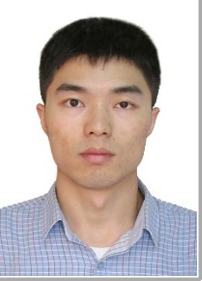
Dr. Chengmin Li
Power Electronics Laboratory - PEL
Swiss Federal Institute of Technology – EPFL
Lausanne, Switzerland
Dr. Chengmin Li is a Postdoctoral researcher at Power Electronics Laboratory at EPFL in Lausanne, Switzerland. He received the Ph.D. degree from Zhejiang University, Hangzhou, China in 2019. From March 2016 to March 2017, he was a Research Intern with the GE Global Research Center, Shanghai, China. His research interests are related to medium voltage converters and application of SiC power MOSFETs.
Partial Power Processing Converters
-A Way to go Beyond the Limits-
Univ. Prof. Dr. Petar. J. Grbović and MSc Igor Lopušina
Abstract — Power electronics and power conversion in general is today part of every segment of our life. Any piece of electric equipment we have today is somehow based on power electronics and converters; home appliance, industrial equipment, renewable energy, automotive, avionic, etc., etc. Conversion efficiency, specific power, power density and converter cost are today the most critical requirements for new converters. One way to increase the efficiency and reduce cost/size/weight is to deploy multi-level and/or multi-cell converters and partial power processing power converters. A novel solution to ultra-high efficiency and specific power dc/dc converters has been proposed and theoretically investigated in this seminar. The solution is based on the fact that in most of application we do not need to process entire dc bus voltage and output current. We can process a fraction of the dc bus voltage and/or the load current. In other words, we do not need to process the converter total rated power; we would process just a fraction of the rated power. This is so-called concept of Partial Power Rated Converters (PPRC). Typical target applications are PV boost converters, energy storage (batteries and ultra-capacitors) interface converters, isolated ac/dc power supplies, electric drives, etc., etc.
Advantages of the PPRC concept, such as significant reduction of the input/output filter size & weight, voltage rating of power devices and conduction/switching losses are theoretically investigated and discussed in the seminar. Various applications such as energy storage interface converters, isolated ac-dc converters and double feed electric machines are also discussed. Several case studies and design examples are given in concluding part of the seminar. One particular design example presented in the seminar is 25kW battery interface dc/dc converter. An extraordinary efficiency of 99.5%, specific power of 30kW/kg and power density of 50kW/dm3 have been achieved.
This seminar is aimed at power electronics engineers, professionals and graduate students who want to improve their knowledge and understanding of advanced concepts of power conversion, such as Partial Power Rated Converters and applications.
Content:
Fundamentals of Static Power Conversion
Fundamentals and history of static power conversion will be briefly presented in the first part of the key note.
Concept of Partial Power Rated Converters
Motivation and background of Partial Power Rated Converters (PPRC) concept is given in this part of the key note. Then, the PPRC is analyzed in details.
Problem of Voltage Balancing
The problem of partial dc bus voltage balancing issue is discussed in this part of the key note. Possible arrangements of the voltage balancing device and power rating versus the input-to-the output voltage ratio are presented and analyzed in details.
Series Resonant Converter as the Voltage Balancing Device
One way to balance partial dc bus voltages is to deploy Series Resonant Converter (SRC) as the Voltage Balancing Circuit (VBC). Detailed analysis of SRC VBC is given in this part of the the key note. Different control modes of SRC such as Resonant Mode and Quantum Mode will be analyzed and discussed.
Several practical design examples will be briefly addressed:
A. 25kW Ultra-Efficient and Compact dc/dc Converter for Energy Storage Grid Connected Applications
B. 25kVA 5-Level 2-Cell dc-ac Converter for LV STATCOM Applications
Input Series Output Parallel (ISOP) Connected Converters as the PPRC
In this part of the key note we will discuss Input Series Output Parallel (ISOP) and Input Parallel Output Series (IPOS) connected converters. The ISOP & IPOS are Multi-Cell & Multi-Level converters that combine the advantages of parallel and series interleaving. This concept can also be used as a part of PPRC where the dc bus partial voltage is automatically balanced without additional devices and converters.
Several application examples and design cases will be given at the end of this part of the key note:
A. Ultra-Dense & Efficient ac-dc Converter for Portable Welding Tools (16kW, 40V @ 400A)
B. Double Feed Induction Machine & the Rotor Converter for High Power VSD Applications
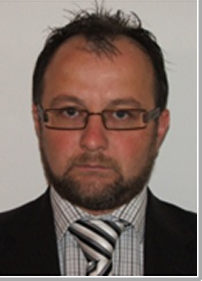
Univ. Prof. Dr. Petar. J. Grbović
Innsbruck Power Electronics Laboratory (i-PEL),
Institute of Mechatronics, University of Innsbruck, Austria
Member of Scientific Committee,
Center of Power Electronics and Drives (C-PED),
Rome TRE University
Univ. Prof. Dr. Petar. J. Grbović received the Dipl. Ing. (B. Sc.) and the Magister (M.Sc.) degrees from the School of Electrical Engineering, University of Belgrade, Serbia, in 1999 and 2005, and the Doctor (Ph.D) degree from the Laboratoire ’Électrotechnique et d’Électronique de Puissance de Lille, l’Ecole Centrale de Lille, France in 2010.
From March 1999 to February 2003, he was an R/D Engineer with RDA Co, Belgrade. From November 2000 to June 2001, he was a Consulting Engineer with CESET Italy (a division of Emerson Appliance Motors Europe). From March 2003 to April 2005, he was with the R&D Department, PDL Electronics, Ltd., Napier, New Zealand. Since April 2005 until July 2010 he was working with Schneider Toshiba Inverter Europe, Pacy-Sur-Eure, France, as Power Electronics Group Expert. Since September 2010 until August 2011 he was with General Electric Global Research, Munich, Germany. Since September 2011 until September 2018 he is with HUAWEI Technologies, Europe Energy Competence Centre in Munich/Nuremberg, Germany, where he works as a Senior Expert in the area of power electronics and power conversion. In March 2016 he was appointed to position of the scientific committee of Centre of Power Electronics and Drives, C-PED Lab., Roma TRE University, Italy. In June 2018 he was appointed to position of Full Professor at Innsbruck Power Electronics Laboratory (i-PEL), the University of Innsbruck, Austria.
The focus of his research is on application of advanced energy storage devices, active gate driving for high power IGBTs and JFET SiC, power converter topologies, advanced power semiconductor devices and control of power converters and semiconductor switches.
Dr. Grbović published over 80 IEEE conference/journal papers, 18 IEEE seminars and a book “Ultra-capacitors in power Conversion Systems: Analysis, Modelling and Design in Theory and Practice”. He has 17 US & EP patents granted and 9 patent application pending.
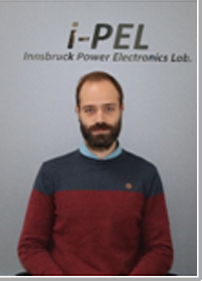
MSc Igor Lopušina
Innsbruck Power Electronics Laboratory (i-PEL),
Institute of Mechatronics,
University of Innsbruck, Austria
MSc Igor Lopušina received the B. Sc. degree from the School of Electrical Engineering, University of Belgrade, Serbia, in 2017, the MSc. Degree from the École Polytechnique Fédérale de Lausanne (EPFL), Switzerland, in 2019. Currently he is working towards his PhD degree at the Innsbruck Power Electronics Laboratory, Austria.
During his studies he was member of a Formula student team “Road arrow” at the University of Belgrade, and Hyperloop team “EPFLoop” at the EPFL. From September 2018 to march 2019, he was intern at the Technical Department at the European Organization for Nuclear Research (CERN) in Electrical Power Converters Group. From October 2019 he is working as teaching assistant at the University of Innsbruck, Austria.
His research interest includes partial power processing DC to DC converters, and application, control and driving techniques of power semiconductor devices.
